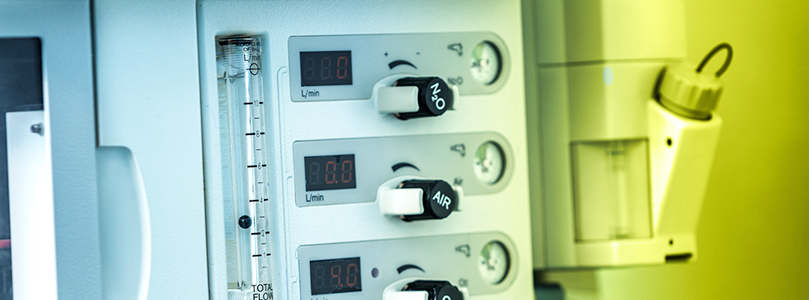A Look at the Complexity of a Life-Saving Device

These days, everyone is talking about ventilators. The shortage of ventilators during the COVID-19 crisis is costing lives and rightfully, everyone is demanding more. With so many auto manufacturers stepping up to help build them, one has to wonder… what is taking so long?
Sadly, the complexity of a ventilator is comparable to the current need. Big. These life-saving devices have many moving parts and require perfect assembly. If they are poorly designed, manufactured or used, ventilators can be as harmful as they are helpful. But if it’s just air blowing out of a tube, what’s the big deal? Well, it’s not. Mechanical ventilators require 3 key components, which in turn each require different knowledge and expertise.
1. An Energy Source to Run the Device.
|
To begin with, there are many different models of ventilators to accommodate different severities and scenarios. These ventilators can be powered by different sources, such as a wall outlet, a battery or compressed gas. Each power source comes with their own benefits. |
While there are many models of ventilators, there are 2 distinct types: Invasive and Noninvasive ventilation. |
Depending on what type is being used, someone with a deep understanding of electrical engineering and/or gas consumption needs to be involved in the design and testing.
2. A Method to Convert Energy to Air Pressure and Deliver it with the Right Timing and Breath Size.
The purpose of a ventilator is to do some or all of the breathing for the patient. This can either be because the patient can’t do it on his/her own or because there is too much fluid in the patient’s lungs and they don’t have the room to breathe.
Ventilators are commonly connected to separate sources of air and oxygen. There are regulators within a ventilator to control the amount of each that will be delivered to the patient. The required amount will vary from one case to the next. If the device is only powered electrically, it requires a compressor or a blower to generate the right pressure and airflow. A compressor moves a lower gas flow to a storage container with a higher pressure. A blower generates a larger gas flow with a pressure increase. Air is delivered to the patient via a series of valves. There is a flow control valve to manage what goes in and an expiratory valve or “exhalation manifold” to control what comes out. To do this effectively, a control system runs the show.
Control systems are designed using mechanical, pneumatic, fluidic, and/or electronic components, in addition to dedicated software. Mechanical components include levers, pulleys, etc. Pneumatic control circuits use gas pressure to operate diaphragms, pistons, and pumps. Lasers create micro channels for gas flow and enable ventilator control circuits to be made smaller for transport. Fluidic circuits, which are immune to electromagnetic interference emitted from other medical equipment, use a small gas flow to generate signals that operate switches and control timing. Lastly, ventilators mainly use electronic control circuits with microprocessors to manage the monitoring of both the system and the response from the patient.
3. A Way to Monitor the Performance of the Machine and the Response from the Patient.
The control software determines how the ventilator interacts with the patient. This is achieved by measuring the pressure, volume and flow of air going in and out of the lungs. The need and results vary from one person to the next and are communicated via the GUI to the technician monitoring the device. They can then make any adjustments that may be required. As with any complex system, there are always outside factors to be considered such as the resistance and compliance from the patient circuit.
|
The patient circuit is the tube that transfers gas between a patient and a ventilator. A patient circuit will skew what the ventilator is programed to do and as a result, a patient never receives the treatment that was originally input. |
Circuit compliance is the change in volume within the patient circuit (a rubber tube) as a reaction to inflating pressure. |
Results are displayed on a GUI detailing flow, pressure and volume and need to be understood and potentially modified by a technician. In addition, a ventilator needs to be able to react to triggers caused by the patient’s response. If the patient’s status changes, the settings will need to be adjusted accordingly. A ventilator is only as good as its software engineering.
Essentially, ventilators are needed and they are needed now. Unfortunately, the amount of work and validation that goes into each device is substantial. The more companies that get on board to help, the better but it can’t be assumed that an existing manufacturing plant is ready to go. There is a lot of innovation that has gone into the mechanical ventilator and different industries will need to adapt their manufacturing setup to accommodate.
To speak with a consultant to accelerate ventilator testing, please contact Averna.
Building a ventilator will only go so far...
Get in touch with our experts or navigate through our resource center.
Read our case study about how we helped accelerate production through automated test for our client’s ventilator product line.

